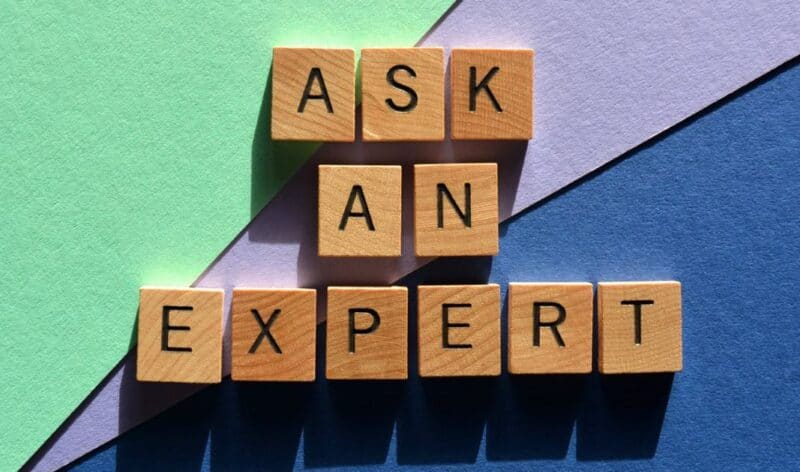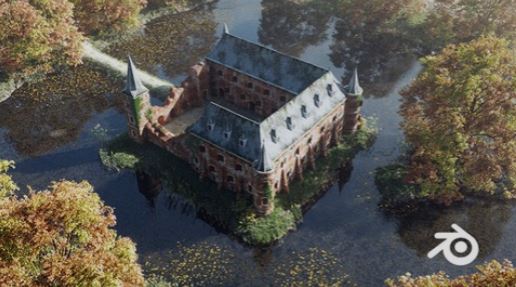Learning something as complicated as Blender can leave us frustrated. Blender has so much to learn, I doubt anyone knows the entire program.

This page may contain affiliate links which pay me a commission if used to make a purchase. As an Amazon Associate, I earn from qualifying purchases.
Frustrated Learning Blender? Try This:
If you’re new to Blender or have some experience but find yourself frustrated, here are seven tips to help push through…
Tip #1: Learn (or Re-learn) the Basics
Most people start using Blender because they want to create huge, elaborate digital masterpieces. I’m guilty of this myself. It’s tempting to skip the basics and go straight to character sculpting, animation or VFX.

But it’s important to learn the fundamentals first. Thoroughly learning Blender’s user interface, workflow and even basic art concepts like lighting and composition are necessary if we want to get to the advanced stuff.
Skipping these steps may seem like it will save time. But in the long run, we will actually take longer to get where we want to be in our Blender journey.
Also, there are some great courses for learning Blender on Udemy as well.
Tip #2: Find Higher Quality Tutorials
There is no shortage of tutorials for Blender. Because of its massive community following, free tutorials are all over YouTube. A lot are great. Some are terrible. Maybe you need to change up how (or from whom) you’re learning.
For absolute beginners, there’s no reason to pay for Blender tutorials. There are good ones available for free. If you’re more advanced, there might be benefits to investing in a paid Blender course with high reviews.
Many of the best teachers charge for their courses and there are some really good ones on Udemy.
Here’s a video on 12 of my favorite YouTube channels for learning Blender.
Tip #3: Use Online Resources
In addition to video tutorials, there are tons of resources online to get help if you’re stuck in Blender.

I’m active in several Facebook groups for Blender and Reddit threads specific to looking for help in Blender.
We should always start with a simple Google search when we have a specific problem. If that doesn’t work, then go to Reddit, Facebook or Quora and ask the community for help.
Most in the Blender community are happy to help a fellow user. Just make sure to adequately describe what you’re having trouble with so people know exactly how to help.
Tip #4: Complete a Simple Project
We probably didn’t get into Blender looking to create a donut. Ambitious projects can lead to demoralization and self-doubt when we realize what we undertook was too complicated. It can be refreshing to step back and create something more manageable.
Take a look around your house for something you could model in a day or two. Make that your next project. Because it’s achievable, we will feel renewed motivation when we finish. This also helps to find new inspiration for our next project.
I don’t know why but when I’m working on one project, ideas start to flow for the next one. It has a snowball effect.

Since it should be a simple project, it won’t take months to finish. We will see tangible success in a day or two. When you finish, do another one! Trust me, this strategy does wonders to rekindle the imagination and I promise you will continue to learn along the way.
Tip #5: Focus!
When learning Blender, it’s easy for our attention to drift because there’s so much to learn. And of course, we want to learn it all. However, if you have a specific area of Blender you want to master then you should focus on that area (assuming you’ve grasped the basics first! Don’t forget tip #2!).
If you don’t have a specific area you want to learn, try to find one. Everyone would love to master all of Blender, but that’s not realistic for beginners…and probably not for anyone. We all need to slice our goals into smaller, more attainable ones.
So try picking one area of Blender (like modeling or materials) and focus on getting really good at that before moving on to the next.
If you really want to create characters, focus on that. Take a course in character design and don’t get side-tracked by animation, environments or other temptations because none of those further your character goal.
Once you achieve your goal, then you can move onto something else.
Tip #6: Change Your Focus
If you’ve already done tip #5 (focus!) and are at a plateau, then change gears. It might be time to change your focus to another area of art, perhaps creating an environment for your character. This tip might sound like it contradicts the last one but it’s really the second part of it.
Before you do this, ask yourself honestly (or ask others) “have I gotten pretty good at what I’ve been focused on?” If the answer is no then keep working on it because you aren’t there yet.
If the answer is “yes” then it’s time to move on to other areas. You may learn you have a lot more upward potential on the learning curve in the new area of focus.
Tip #7: Take a Break
If nothing else has worked, it might benefit you to take a short break from Blender. Spend time on other software or aspects of your life beyond the computer… like fitness or improving your relationships.
Blender takes a long time to learn and sometimes a little break does a world of good.

When you take a break from learning Blender, you will be more capable of reaching your potential faster when you return.
It’s up to you how long of a break you need. It might be just a few days. It might be a month. Your frustration in learning may be spilling into other areas of your life without you even realizing it.
When you take a break from learning Blender, you will be more capable of reaching your potential faster when you return. It’s up to you how long of a break you need. It might be just a few days. It might be a month.
Your frustration in learning may be spilling into other areas of your life without you even realizing it.
Balance will improve your learning and probably other aspects of your life. I can personally vouch that Blender can become an unhealthy obsession (just like blogging). I’ve frequently had to take month-long breaks from Blender.
Every time I return, I find it easier to pick up where I left off and move forward.
Final Thoughts
I have a full-time job, a wife and two kids. Nothing is more frustrating to me than going in circles trying to improve as a self-taught Blender artist. But we are in it for the long haul. I hope these tips help get you through to the next phase of learning Blender.
Stay Creative!
Subscribe to the blog to get future articles, tutorials and other Blender content!
Get Brandon’s Newsletter
By submitting, you agree to receive periodic e-mails from me. You can unsubscribe at any time.









